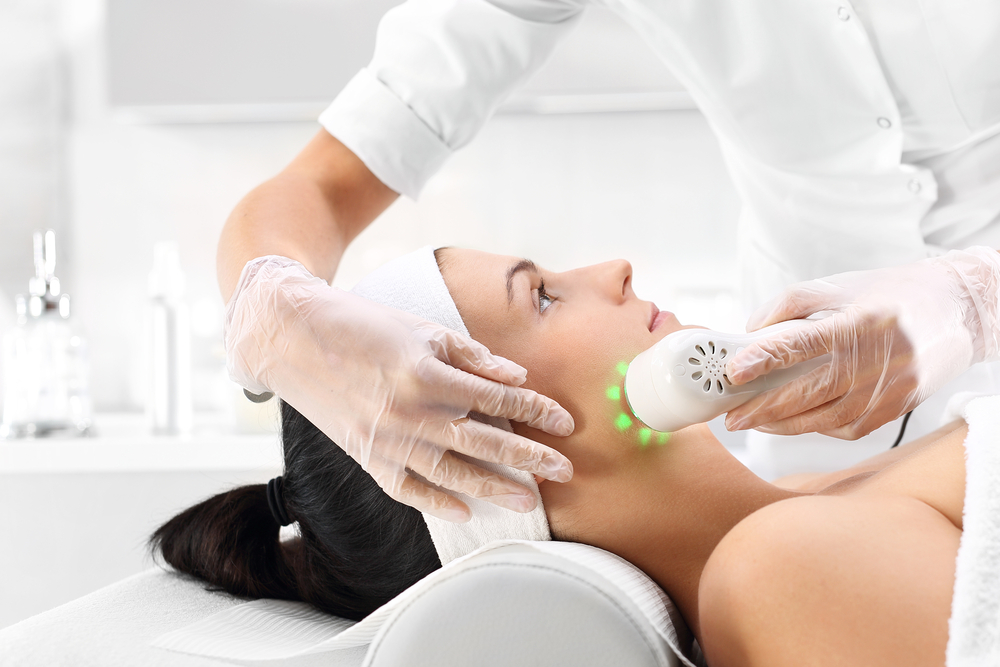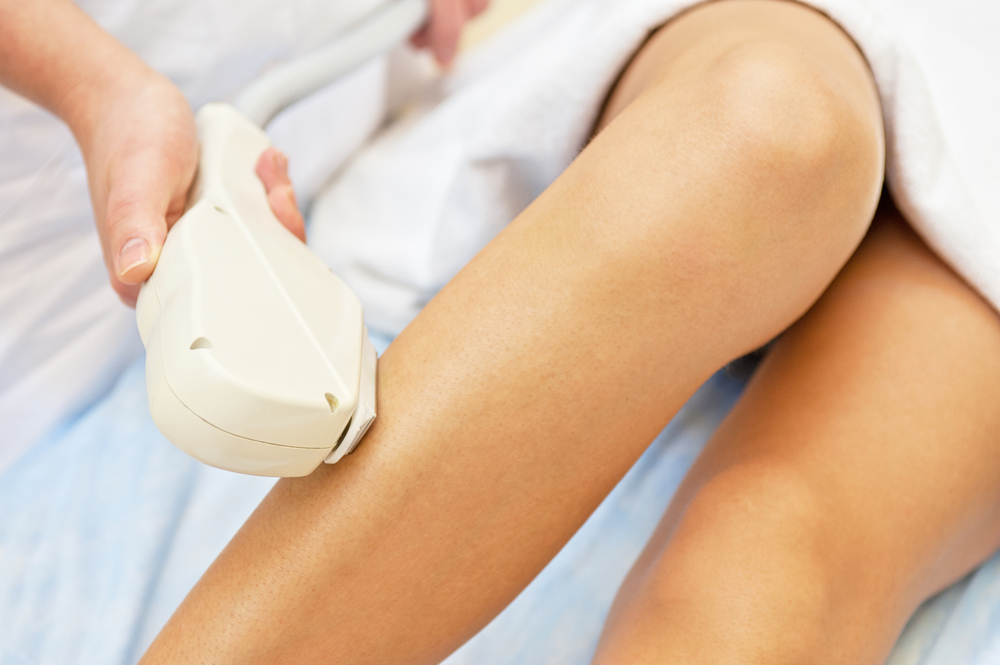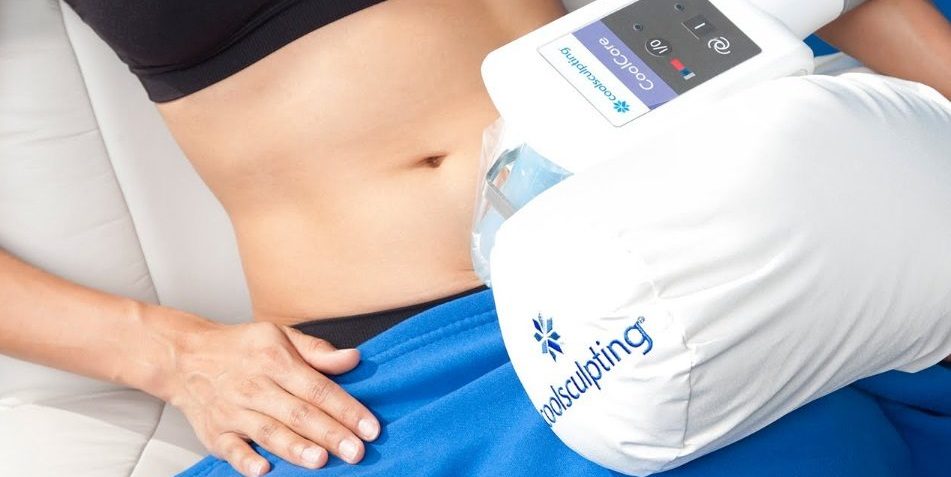- Not all skin lightening procedures are created equal. Certain options are better for certain scenarios and certain skin types.
- Permanent skin lightening is possible through treatments such as lasers, bleaching creams or a combination of options.
- Cutting-edge lightening injections are bursting on the scene, promising permanent results relatively easily, but there are some concerns.
- Achieving a more even complexion is attainable for many.
Achieving the perfect skin tone is one of the most elusive cosmetic feats out there. For some of us, it’s a silky-smooth, sun-kissed glow we’re after. For others, it’s a matter of dialing down and evening out a spotty complexion. From home remedies to spray tans to laser treatments, there are hundreds of unique ways to improve your skin’s complexion, but not all are ideal for every person. There are a variety of skin lightening treatment options on the market to help lighten damaged skin, whether via at-home topical treatments or in-office laser procedures. Here are some of the most popular skin lightening treatments out there, with information about how they can correct your specific skin concerns.
Laser Skin Lightening
Lasers are truly one of modern cosmetic medicine’s most amazing technologies. In the case of skin lightening, they offer one of the more permanent and effective solutions available. Many people opt for laser skin lightening over creams and skin bleaching because it’s relatively fast-acting. In just a few sessions, you can correct some of the most frustrating yet common skincare concerns, like wrinkles and dark spots.
Laser skin lightening was first introduced to the market in the 1980s, when doctors began to use CO2 lasers to deliver short-pulsed energy to remove skin cells and lighten skin tones in the process. These lasers, alongside other types of lasers, are still used today. Your doctor or laser specialist will typically administer or topically apply local anesthesia and/or provide sedative medications to control pain. High-energy light is then administered to the skin, which is absorbed by its natural water, melanin and hemoglobin, triggering new skin generation and leaving behind a lighter skin tone.
Dermatologists now often recommend intense pulse light (IPL) lasers, pulsed-dyed lasers, Nd:YAG lasers and CO2 lasers to lighten skin. These types of lasers affect the skin’s ability to stimulate melanin production, which can help lighten skin while treating frustrating dark spots, age spots, sun spots, melasma and pigmentation. Consulting with a dermatologist or cosmetic surgeon can help you determine which type of laser is most appropriate for your natural skin tone and concerns.
Laser Skin Lightening Side Effects and Risks
There are two distinctive types of laser treatment options available for lightening skin color: ablative and non-ablative lasers. These two types of lasers differ in various ways, especially in terms of side effects and recovery time. Ablative lasers (including CO2 and Erbium lasers) are considered the more intense option, but they also tend to be significantly more effective. Risks associated with this type of laser include redness, swelling, acne, infection and scarring.
Non-ablative lasers (including Fraxel Restore, CoolTouch and N-lite) are preferred in many scenarios because they’re less invasive. Rather than actually destroying skin tissues, non-ablative lasers simply heat them up, which can cause fewer side effects. Still, those who undergo non-ablative laser lightening treatments are at risk of infection, mild redness, swelling, bruising, blistering and scarring. Both versions are considered safe and are approved for use by the U.S. Food and Drug Administration (FDA).
Bleaching Creams
If you’re too squeamish to go under the laser, fear not! Skin lightening cream can be used to permanently lighten skin at home relatively safely. There are several unique bleaching creams out there, most of which contain the topical skin-bleaching agent hydroquinone. This ingredient is used in a wide range of products designed to lighten skin and correct hyperpigmentation. It can be used for all-over lightening or to lighten darker skin on the knees and elbows.
Hydroquinone works by limiting the skin’s ability to produce melanin through a concentration of between 2 and 4 percent, with 4 percent being the standard used in prescription-strength creams. Most people report seeing visible results within 12 weeks of consistent use, especially when SPF 35+ sunblock is applied regularly. Sunburn can complicate the medication’s ability to work properly, and can increase your risk of developing skin cancer.
In simple terms, hydroquinone can be seen as a garden hose. When clamped tightly, hydroquinone can prevent the transfer and excess production of darker pigment to a specific area. When released, if you are ultimately more prone to your skin tone darkening (as in the case of people with Melasma) then the pigment returns. Professionals often advise people experiencing re-pigmentation after stopping hydroquinone to taper off slowly, and occasionally add another antioxidant rich lotion or serum in the process.
There is also a wide range of skin lightening home remedies people try, ranging from citrus peel and yogurt treatments to milk and honey masks that affect the production of melanin. In general, these treatments work by harnessing the same potent acids used in chemical peels (especially lactic acid from milk and citric acid from oranges or lemons) to slough away the top layers of the skin to create a fresh, new appearance.
Bleaching Creams: Side Effects and Risks
Hydroquinone has gotten a bad rap over the years, and for good reason. Skin whiteners containing this ingredient were banned in South Africa years ago due to skincare companies adding harmful active ingredients like mercury and glucocorticoids to their products.
Fortunately, this additive is significantly less harmful when used on its own. With that being said, this skin whitening treatment can cause a skin issue called exogenous ochronosis, which in turn causes speckled pigmentation all over the body and face.
Lightening ingredients like hydroquinone have also been linked to liver damage when taken orally. Other side effects and risks of hydroquinone include photosensitivity, allergic reaction and toxicity, which can trigger ringing of the ears, nausea and seizures. Home skin whitening remedies are significantly less risky in terms of long-term use. As long as you use safe, gentle and natural ingredients to create home lightening creams and peels, there’s a good chance you won’t see many harmful side effects.
Skin Lightening Chemical Peels
Chemical peels have become a skincare cure-all for a range of issues, from fine lines and wrinkles to depigmentation and dark spots. These treatments work by removing the outer layer of the skin via chemical compounds and acids — primarily alpha-hydroxy acid like glycolic acid as well as salicylic acid, azelaic acid, citric acid and lactic acid. These treatments can be performed in-office by a specialist or at home using over-the-counter or homemade peels.
Choosing which type of chemical peel to use comes down to your specific skin issues. If you’re looking for an all-over lighter complexion, you’ll want to invest in one of the deeper, more intense chemical peels available. Those who just want to correct stubborn discoloration and dark spots can see big gains from gentler chemical peels. Different skin types lend themselves better to different types of peels. For example, those with acne-prone or oily skin can benefit from a lightening salicylic acid peel.
Chemical Peel Side Effects and Risks
The great thing about chemical peels is that they produce consistent results with few side effects or risks. In general, most patients report mild redness and irritation after undergoing a dermal peel. In the cases of deeper and more intense peels, permanent scarring — especially on the lower part of the face — is possible. Some people also report blemishes and viral flare-ups after having a chemical peel.
And, of course, chemical peels can cause hypopigmentation and other skin lightening effects in those with deeper skin tones. In some cases, especially after a superficial peel, hyperpigmentation (the darkening of skin) can occur. We highly recommend speaking with a board-certified plastic surgeon or dermatologist about your specific skin type and skin concerns, as he or she will be able to determine which type of acid is best suited for your skin.
Tranexamic Acid for Topical or Oral Skin Lightening
Steering away from an overly technical discussion, essentially the tranexamic acid inhibits a pathway that leads to increased pigment when exposed to UV. Studies going back to the 1980s have tested the chemical both topically and orally to improve skin tone, especially in pigmentary disorders like Melasma. Tranexamic acid applied orally is used to temporarily treat pigment irregularities, specifically in Melasma sufferers, with minimal adverse effects when monitored properly. It is not appropriate for patients with a history of heart problems, stroke, or blood clotting issues.
One study published in August of 2014 concluded that topical tranexamic acid did improve skin tone, but not as well as combination topical steroid and hydroquinone, in individuals with Melasma. Currently, topical tranexamic acid can be found in Skin Medica’s Lytera 2.0 serum among many other potent antioxidants that aid in skin tone repair. It can be found at professional seller locations like physician offices and authorized medical spas.
Tranexamic Acid Side Effects
The side effects of topical tranexamic acid are far fewer than hydroquinone, therefore it is a seemingly more attractive therapy to most individuals seeking results without the worry of issues occurring later.
Orally, tranexamic acid is meant only for a treatment duration of approximately 3 months in order to avoid the dreaded prolong-use side effects: blood clots, heart attack, stroke, and pulmonary embolism. Pretty serious side effects for anyone to “swallow”, but if your pigmentary issue is contributing to serious unwanted attention or despair, it may be a worthwhile conversation to have with your dermatologist.
Skin Lightening Injections
One of the most promising cosmetic treatment options for lightening darker skin is the naturally-occurring antioxidant glutathione. Found in plants, bacteria and fungus, glutathione is another ingredient that’s commonly found in skin-lightening treatment options. It inhibits melanin synthesis by stopping amino acids from mixing with enzymes that produce the melanin that gives your skin cells their darker color.
The treatment is so promising that doctors have begun clinical trials for intravenous glutathione in the United States, but it’s not yet known whether this option is completely safe. The buzz around this new therapy has been touched upon in physician-directed dermatology clinical journals and magazines, so we should expect to hear more about it as time progresses. Although a skin whitening injection sounds super-convenient and quick, achieving pristine, white skin via this antioxidant may not be so simple. Certain risks and side effects have halted the treatment’s ability to fully take off in the United States. Currently, Asian countries, like the Philippines, are one of the few areas using this therapy on a more regular basis. In addition, the results of glutathione taken orally has been seen to offer limited or no change in complexion, therefore the more useful approach seems to be intravenous. Oral glutathione has also been associated with rashes and thyroid problems in several clinical articles.
Skin Lightening Injections: Risks and Side Effects
Like hydroquinone, glutathione is not harmful on its own. As previously mentioned, this is an antioxidant that comes straight from the Earth and is relatively mild. With that being said, glutathione can have negative interactions with other drugs. It can lower the body’s zinc levels, which can make you irritable and cause diarrhea, nausea and loss of appetite. Glutathione may also trigger asthma attacks in people who have asthma, and may cause wheezing.
In some cases, glutathione’s effect on the way the body metabolizes certain medications may actually be a good thing. It has been proven to lower the neurological and renal toxicity of the chemotherapy drug cisplatin, so it’s actually used to help reduce the negative side effects of chemotherapy and improve healing.
Loving the Skin You’re In
It should be noted, however, that anyone searching for lightening therapies, and those professionals providing them, must be culturally and psychologically sensitive to the difference between lightening, improving tone, and whitening the skin. Without getting political or being culturally insensitive about it, feeling comfortable in one’s skin is paramount to ultimately being confident, regardless of where it lands on the tone spectrum.









